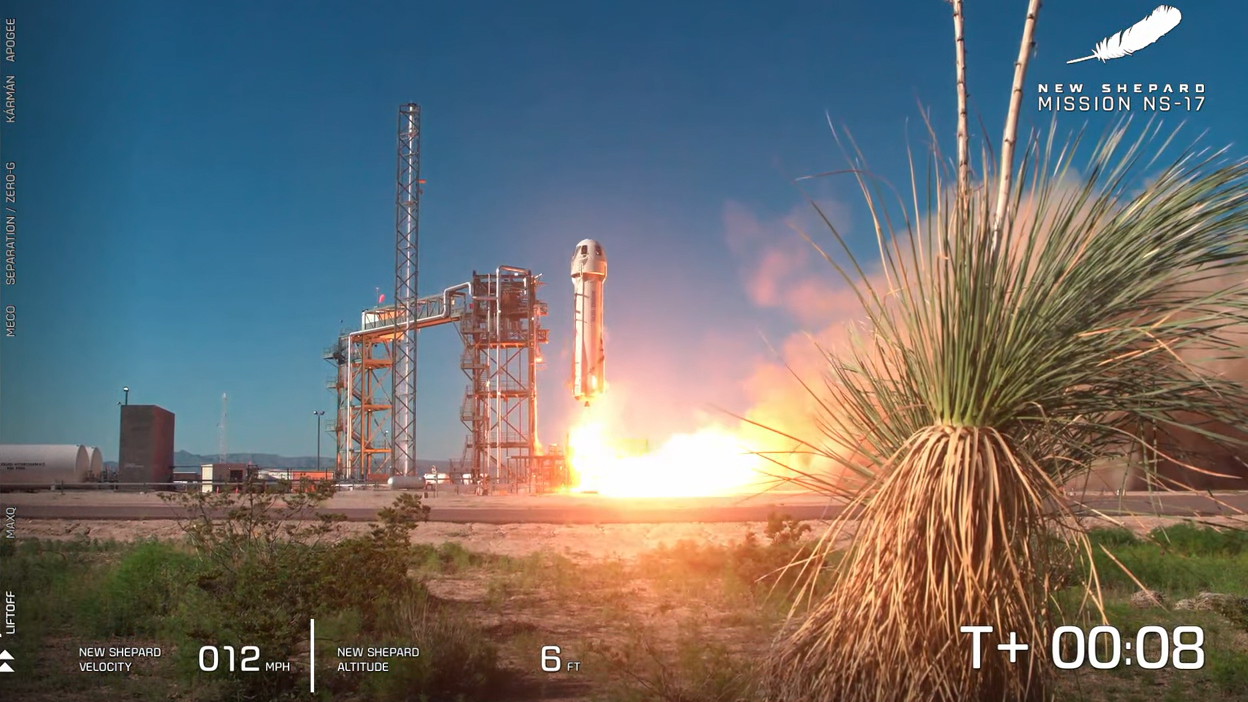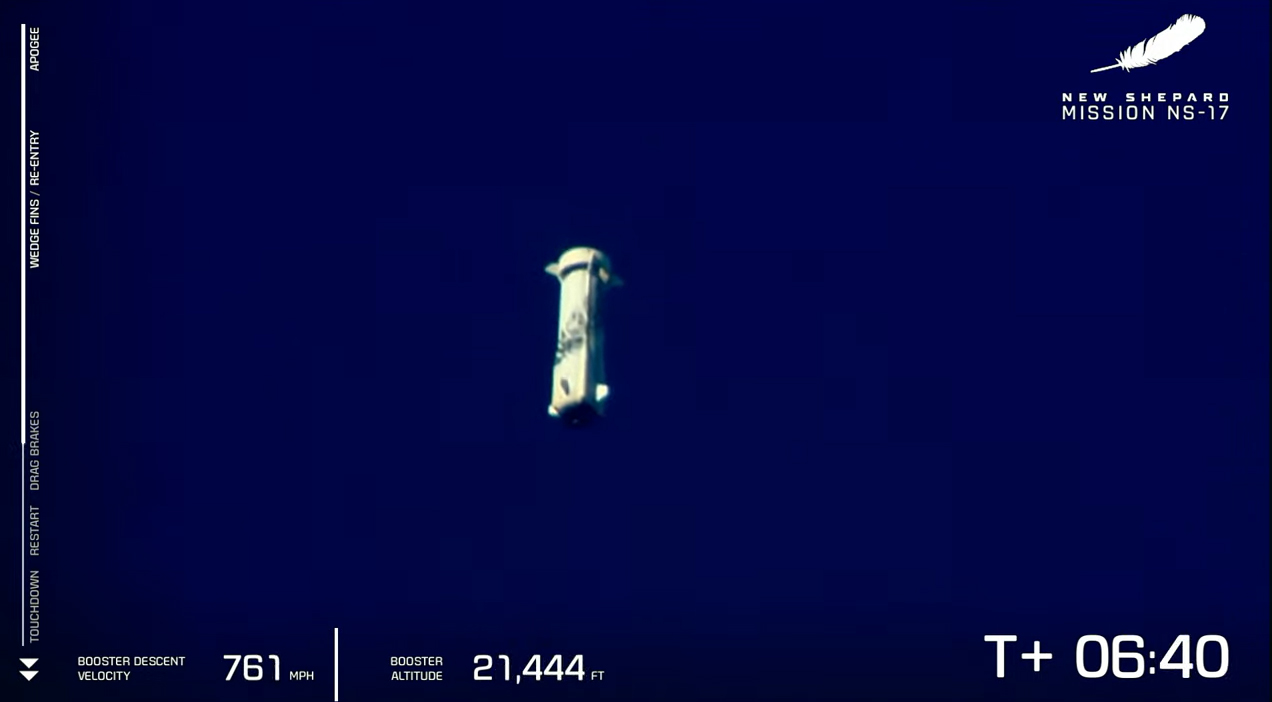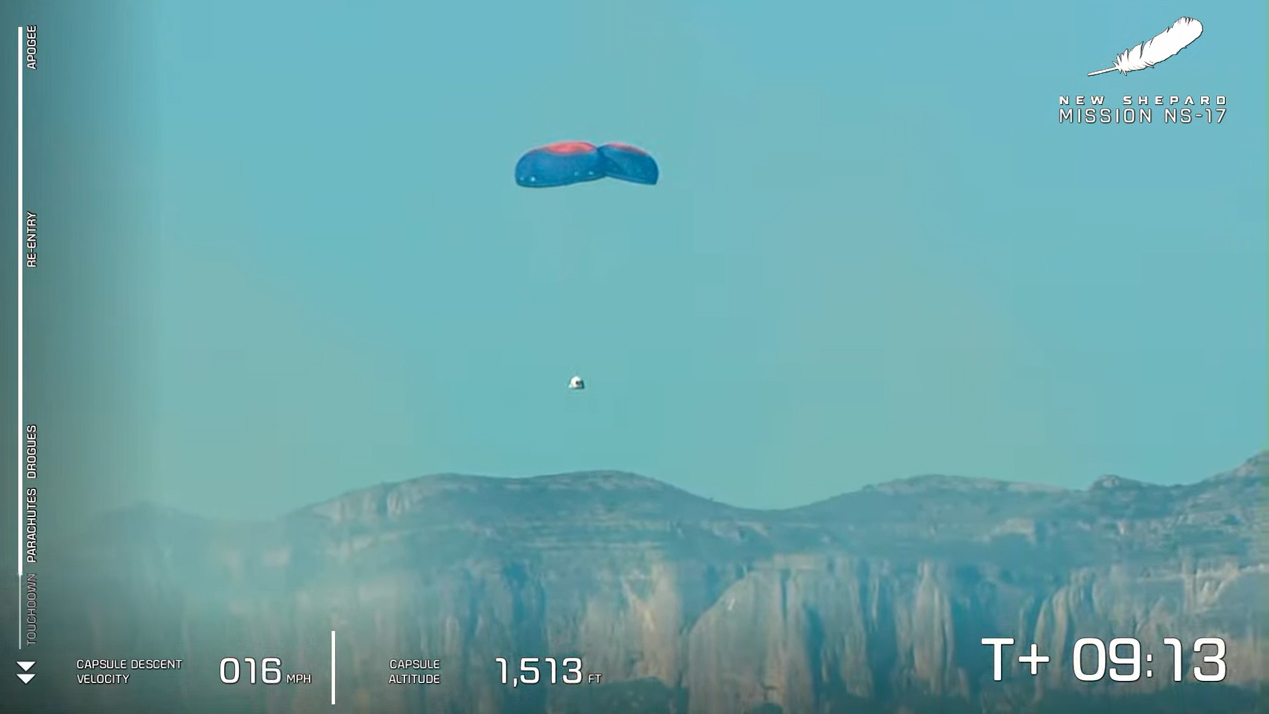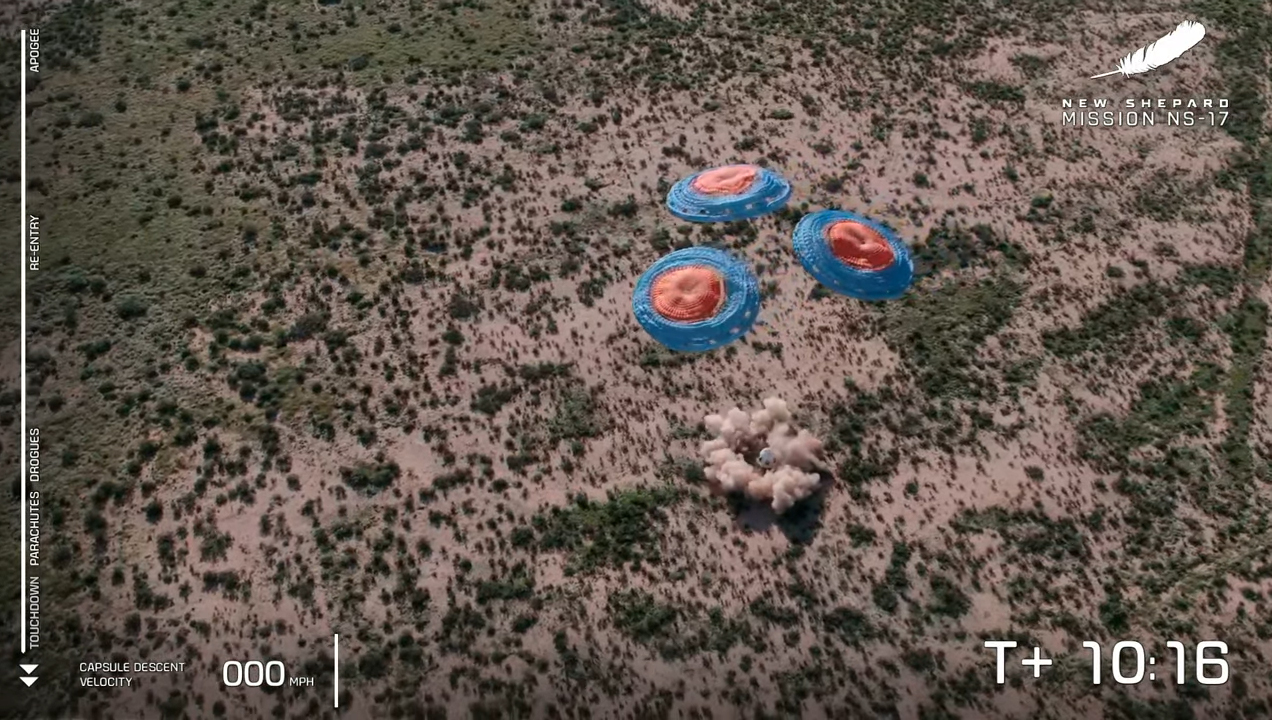Blue Origin launches New Shepard to test moon landing tech and more in suborbital flight
Blue Origin went to space again.
The company's reusable New Shepard rocket-capsule combo aced its latest mission this morning (Aug. 26), an uncrewed jaunt that carried a variety of scientific experiments, as well as some pioneering artwork, to and from suborbital space.
It was the first flight for Blue Origin since July 20, when company founder Jeff Bezos and three other people launched on the first-ever crewed New Shepard mission.
Video: Watch Blue Origin's New Shepard NS-17 launch (and stunning landing)







New Shepard launched today from Blue Origin's West Texas site, near the town of Van Horn, at 10:32 a.m. EDT (1432 GMT; 9:32 a.m. local Texas time) after nearly an hour of delays caused in part by a payload readiness issue. Both elements of the vehicle had come back down to Earth for soft, parachute-aided touchdowns by about 11 minutes after liftoff.
Today's mission was the 17th overall for New Shepard and therefore carried the designation NS-17. It marked the eighth flight for RSS H.G. Wells, the New Shepard vehicle dedicated to uncrewed jaunts. The spacecraft reached an unofficial altitude of about 347,430 feet (105,897 meters) — which is nearly 66 miles ( 106 kilometers) — during the flight, well above the 62-mile (100 km) Karman line widely recognized as a boundary of space.
Blue Origin also operates a second New Shepard, known as RSS First Step; that vehicle carried Bezos, his brother Mark, 18-year-old Dutch student Oliver Daemen and 82-year-old aviation pioneer Wally Funk on July 20.
Breaking space news, the latest updates on rocket launches, skywatching events and more!
In photos: Blue Origin's 1st New Shepard passenger launch with Jeff Bezos
On today's mission, 18 scientific payloads rode inside H.G. Wells' capsule, 11 of which were NASA-supported, Blue Origin representatives said.
One of those experiments, known as OSCAR (short for "Orbital Syngas/Commodity Augmentation Reactor") tested technology designed to convert spaceflight trash to useful gases such as water vapor. Another, called Modal Propellant Gauging, demonstrated a new way to measure how much fuel is left in a spacecraft's tank — an important task that can be tricky to perform in microgravity.
There was also some scientific gear on the exterior of the capsule — namely, NASA's Deorbit, Descent and Landing Sensor Demonstration experiment, a suite of sensors designed to help spacecraft land more precisely on the moon and other distant destinations. This same experiment also flew to space on a New Shepard mission in October 2020.
But NS-17 was about art as well as science. The mission also lofted "Suborbital Tryptych," a three-portrait piece that Ghanaian artist Amoako Boafo painted on the capsule's main parachute covers. No art installation had flown on a New Shepard mission before.
"The portraits capture the artist, his mother, and a friend's mother," Blue Origin representatives wrote in an NS-17 mission description. "The artwork is part of Uplift Aerospace's Uplift Art Program, whose purpose is to inspire new ideas and generate dialog by making space accessible and connected to the human experience."
The rock band OK Go also launched artwork into space aboard NS-17. The group said on Twitter that its Praxinoscope postcards were flying aboard the mission. In 2019, OK Go announced an Art in Space contest for students between the ages of 11 to 18, calling on kids to submit ideas for art projects in space and how they could be achieved.
And, as on previous New Shepard missions, NS-17 carried to and from space thousands of postcards submitted by kids via Club for the Future, a nonprofit organization run by Blue Origin.
With its latest uncrewed flight in the books, Blue Origin said it's looking to launch its next astronaut flight "soon," and has said in the past that the flight will likely lift off in the fall.
"Our astronaut manifest is filling up pretty fast," Blue Origin's Kiah Erlich, director of astronaut and NASA sales, said during today's launch webcast. "We're actually at nearly $100 million in seat sales and just blown away by all of the interest."
This summer, Blue Origin auctioned off the first seat for its first crewed flight last month for a total of $28 million in a fundraiser for Club for the Future. While that winner, who has not been named by Blue Origin, did not fly on the July 20 launch due to a schedule conflict, the runner up in the auction was Daemen's father (for an undisclosed sum) who gave the seat to the 18-year-old.
Blue Origin has not disclosed what the regular price for a Blue Origin trip to space will be on New Shepard.
Mike Wall is the author of "Out There" (Grand Central Publishing, 2018; illustrated by Karl Tate), a book about the search for alien life. Follow him on Twitter @michaeldwall. Follow us on Twitter @Spacedotcom or Facebook.

Michael Wall is a Senior Space Writer with Space.com and joined the team in 2010. He primarily covers exoplanets, spaceflight and military space, but has been known to dabble in the space art beat. His book about the search for alien life, "Out There," was published on Nov. 13, 2018. Before becoming a science writer, Michael worked as a herpetologist and wildlife biologist. He has a Ph.D. in evolutionary biology from the University of Sydney, Australia, a bachelor's degree from the University of Arizona, and a graduate certificate in science writing from the University of California, Santa Cruz. To find out what his latest project is, you can follow Michael on Twitter.

